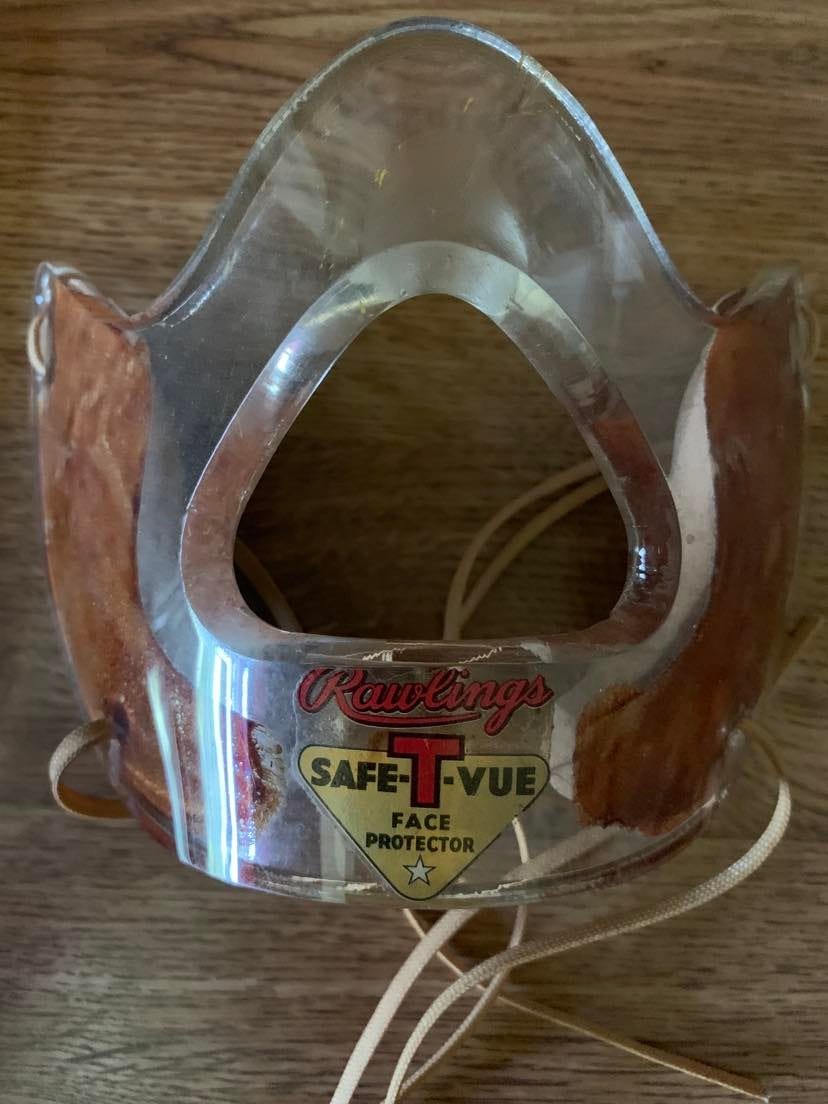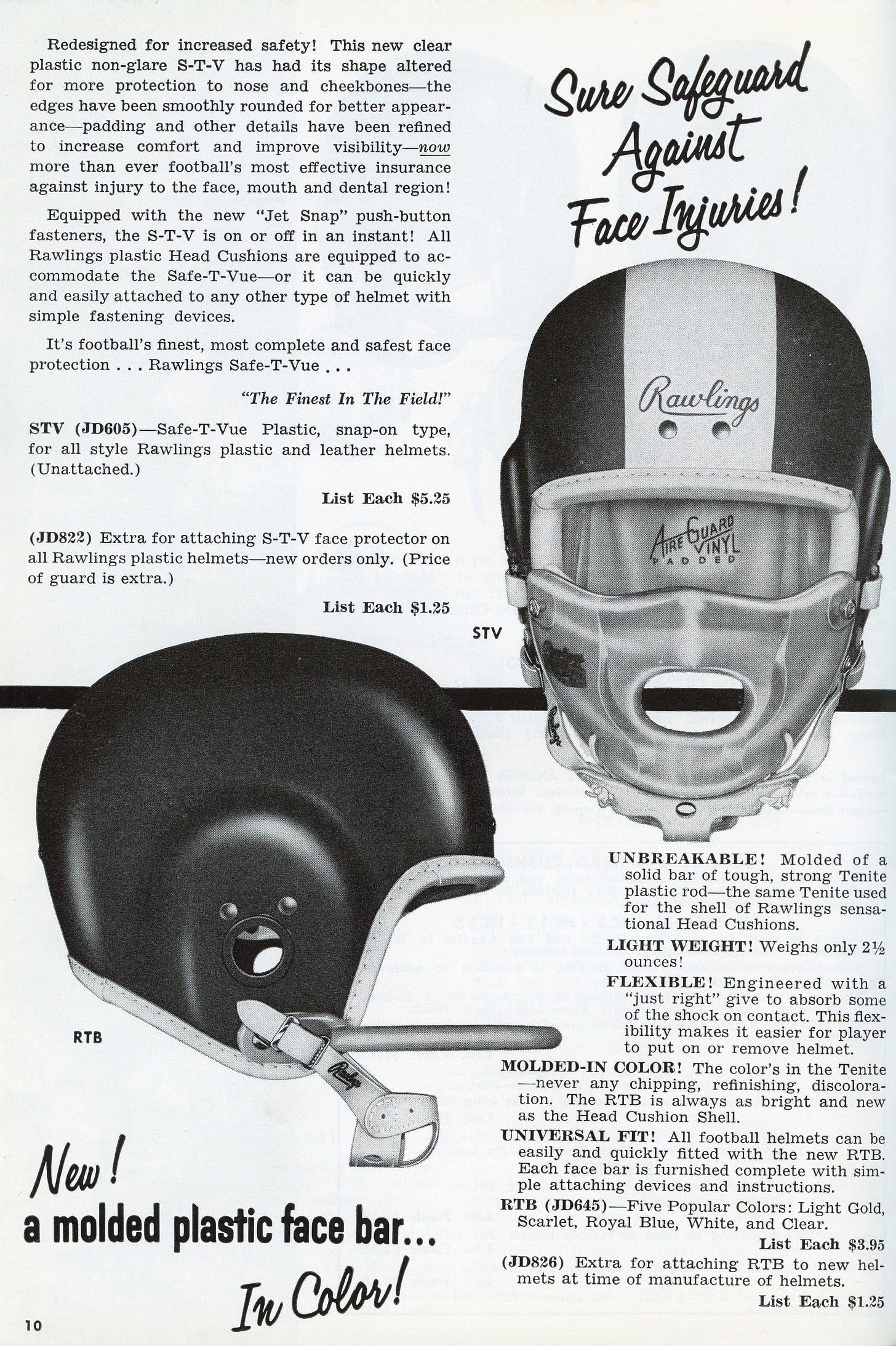Today's Tidbit... Rawlings Safe-T-Vue Face Protectors
A friend sent a nice picture of an early Rawlings Safe-T-Vue Face Protector, so I am sharing the image and some background information. (Earlier posts on the evolution of helmets and face masks are linked below.)
All or most football headgear was leather from the 1890s through the 1940s. Plastic helmets appeared on football fields in 1940, but shortages of plastics for civilian use during WWII delayed their widespread use.
Birdcage face masks that protruded from helmets appeared in the 1930s, but it was not until the 1950s that plastic helmets with protruding face masks became common. After that, however, the combination of players wearing equipment made of hard materials and using helmets as weapons led some football authorities to demand the elimination of plastic helmets or face masks.
Rawlings, one of the top suppliers of football gear at the time, had a better (or worse) idea. They developed clear face protectors attached to the helmet and resting on the player's face. The version below is an early model. Like many early face masks, it attached to the helmet with leather straps.
Rawlings improved the Safe-T-Vue by attaching them with snaps similar to those used with chin straps, as touted in their 1956-57 Rawling's Fall and Winter Catalog.
An advantage of the Safe-T-Vue was that it did not obstruct the wearer's view, although Alan Ameche managed to win the 1954 Heisman Trophy wearing a similar device, and The Horse wore one of a different color.
Football Archaeology is reader-supported. Click here to buy one of my books or otherwise support the site.





